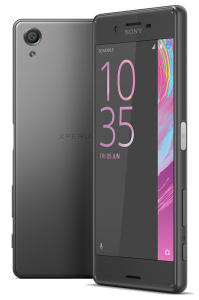The Sony Xperia X is finally here as it begins to arrive in Europe with the US and Canada rollout right around the corner. The entire Xperia X family marks a restart of the company’s mobile efforts in many ways. Though Sony won’t say it, the philosophy with the phone has been fairly straightforward – keep what most would appreciate/use and improve upon it while stripping away features that a majority never bothered using. For those comparing it to the Xperia Z5, it most certainly means compromises.
Yes, 4K video recording is gone. So is its water- and dust-proof housing. But that doesn’t make the Xperia X a downgrade in any shape or form. When looking at the Xperia X, we first have to step back and consider a few facts. Is 4K recording nice? It sure is, yet the reality is that the majority of consumers don’t own a 4K TV or computer so recording 4K is utterly useless for them. The same is true for a design that incorporates a water- and dust-proof housing. Again is it nice to have? Of course it is, but most smartphones out there don’t have this feature (looking at you iPhone, though iPhone 6s did quietly incorporate this) and it hasn’t affected sales one bit.
But perhaps if you’re going to take away one thing from all of this, it’s that the Xperia X wasn’t designed for you. Sony designed the Xperia X family for consumers who either own older Xperia devices or those who are coming from other brands like Samsung, LG, or somebody who is entirely new to Android. Would they be happy if Xperia Z5 owners decided to purchase the Xperia X? Of course they would be, but they didn’t design it to please them. It’s like the philosophy Apple has with their ‘s’ models. Do some upgrade from iPhone 6 to 6s? Sure, but the goal is entice somebody with an iPhone 5 or 5s to upgrade.
So that aside, what do you get with the Xperia X?
Here’s Chris Barraclough with his Xperia X review, writing for recombu:
For a start, the Xperia X is a slightly more compact handset, at 5-inches. Combined with the curvier edges, that makes the X a more comfortable fit for the hand. You can happily use this phone with just a single mitt, which is handy when you’re laden with bags or holding on for dear life on the tube.
Gone is that fragile glass rear, replaced with a smooth metallic back that comes in a fresh range of colours (including the now absolutely obligatory rose gold). We love the hardier finish, which defies sharp objects and coins to remain pleasingly scratch free; you have to really treat the Xperia X poorly to leave your mark. And the Sony branding which previously marked the back plate has been replaced with the Xperia logo.
As Chris notes, water-proofing is gone but it might not matter much.
I didn’t miss the lack of water resistance, as the Xperia X is still perfectly capable of functioning in the pissing rain (as I discovered just yesterday; cheers, Britain). So, barring a terrible drunken toilet dunking incident, chances are most people won’t even care about the change.
Remember how I said the Xperia X wasn’t meant for you?
Sony is also catering to smartphone noobs, offering a helping hand via the Xperia Tips system. Unlike your standard mobile hints that pop up to help every now and then, Xperia Tips actually monitors how you use your handset and throws personalised advice at your facehole. And while tech junkies will get very little from this feature, it’s a solid inclusion for anyone who’s out of their comfort zone. Note also that the tips can be deactivated in the system settings.
Like other features, Sony for better or worse decided that putting a Quad HD display wasn’t simply worth it but if we put specs aside and focus purely on the experience, it might not matter again.
I love how the Xperia X’s screen seems to sit flush with the surface of the phone, while those HD visuals are as strong as ever. Squint as hard as you like, you’re unlikely to ever make out an individual pixel. Sony’s X-Reality engine is on hand to sharpen things up even more, or you can swap to the Super-vivid mode to boost the colours, giving a closer experience to the Galaxy S7’s Super AMOLED screen.
Sony has always paid attention to audio quality too, offering support for HiRes tracks in its Xperia handsets for some time now. The Xperia X likewise has an optional DSEE HX feature which boosts the quality of compressed music files, to make them sound a lot more palatable. You also get a Dynamic Normaliser setting to prevent your music from breaking your precious lugs, as a quiet track runs into a super-noisy one.
Even when considering the phone’s speed, if we put specs aside, it looks like the Xperia X performs just fine.
Sony decided not to slip the most powerful Snapdragon processor (currently the 820) into the Xperia X, instead opting for the Snapdragon 650 chipset backed by 3GB of RAM. Don’t worry though, because the 650 is still a more-than-capable 64-bit hexa-core SoC that’s well up to task of everyday life.
If you’re into your benchmarking, then the Xperia X gave an AnTuTu v6.1.4 benchmark of 78325 which places it alongside the OnePlus 2, HTC One M9 and Samsung’s Galaxy S6 Edge.
Perhaps most important to me is the camera on a smartphone. With each new handset I purchase, I want my picture-taking experience to be that much better and the Xperia X is no slouch with a 23-megapixel rear-facing shooter.
Firstly, the Xperia X’s camera is bloody fast. Hold down the shutter button when the phone is asleep and it’ll wake up, boot the camera app and (if you like) take a shot in roughly a second usually. That’s great news if you’re always missing those spontaneous photo opportunities, which parents and pet owners will know only too well.
The camera also boasts Sony’s latest ‘predictive autofocus’ tech. This tracks your subject’s movements and then predicts its future behaviour, to keep them sharp and cut down the time wasted on refocusing when you hit the shutter button.
Daytime shots are not just sharp, they also boast realistic colours that accurately represent the scene, no matter the lighting. And as the lens boasts quite a wide-angle capture, you’re able to fit a hell of a lot into every photo. Macro shots are also great, with the lens picking up all kinds of tiny details.
 Of course that doesn’t mean the camera can perform miracles.
Of course that doesn’t mean the camera can perform miracles.
As for the predictive focus, it seems to work well at least half of the time. You need to tap your subject before snapping away, at which point the camera app places a yellow box around them and tries its best to track them. Usually it manages to keep up, although fast moving objects such as cars are almost immediately lost. However, the predictive focus can usually handle humans and does seem to speed up the photo taking process, while occasionally cutting down on blur.
As for the 13-megapixel front-facing camera:
The 13-megapixel front-facing snapper is a strong rival to those found on the Galaxy S7, Huawei P9 and so on, and perfect for anyone who’s constantly posting selfies from the club.
In normal light, our test shots at first appeared overly touched-up, with very soft, blemish-free skin. Then I realised that the ‘soft skin effect’ feature was activated by default. I knocked this off and every pic from then on was sharp and packed with detail (a little too much detail, as you can tell from my sleep deprived appearance), with natural colours shining through.
The verdict?
The Xperia X is a curious endeavor from Sony, a flagship phone that willingly skimps here and there in order to undercut rival handsets. And while some might bemoan the lack of Snapdragon 820 action, or how the water resistance is a thing of the past, the Xperia X still ticks all of the boxes for a flagship device.
Slick design? Yep. Gorgeous screen and an all-round fantastic media experience? Sure. Reliable camera tech? Definitely. And despite that ‘cut back’ processor, you still get silky smooth performance as well as decent battery life.
Ultimately, I think the rub for many readers lies here:
Of course, at £459 the Xperia X is a little more expensive than we’d originally hoped. Bear in mind that there are rival phones out there such as the Samsung Galaxy A5 2016, which also offer Full HD visuals, excellent cameras and fingerprint security for over £100 less than the X.
This is one of those instances where it’s hard to gauge why Sony priced the phone as it did. Surely by removing a few noteworthy features and not stuffing it with the latest tech possible, they could have put together a more price competitive phone right? Or perhaps this is where volume is starting to catch up with Sony. With year sales in decline for the past 3 years, Sony looks at less and less favorable component costs which could factor into the higher than expected pricing of the Xperia X. Or maybe Sony simply thought this was an appropriate price.
In their ideal world, Sony would like us to not compare the Xperia X to other devices – be it past devices by them or what competitors have brought to market – and instead judge the phone purely on its own merits. In that specific bubble, the Xperia X delivers on almost every single checklist item. A tried and true design with further refinement that packs a beautiful screen worthy of the pictures it’s capable of producing, powered by a fast processor.
If you can think of the Xperia X in those terms and you’ve got the money for it, I have little doubt that it will satisfy you in just about every way. But of course we live in a world where comparison between devices is just a few clicks away and that’s where thing get more muddied.
Discuss:
Do you agree with Barraclough’s Xperia X review? Does the phone entice you?



